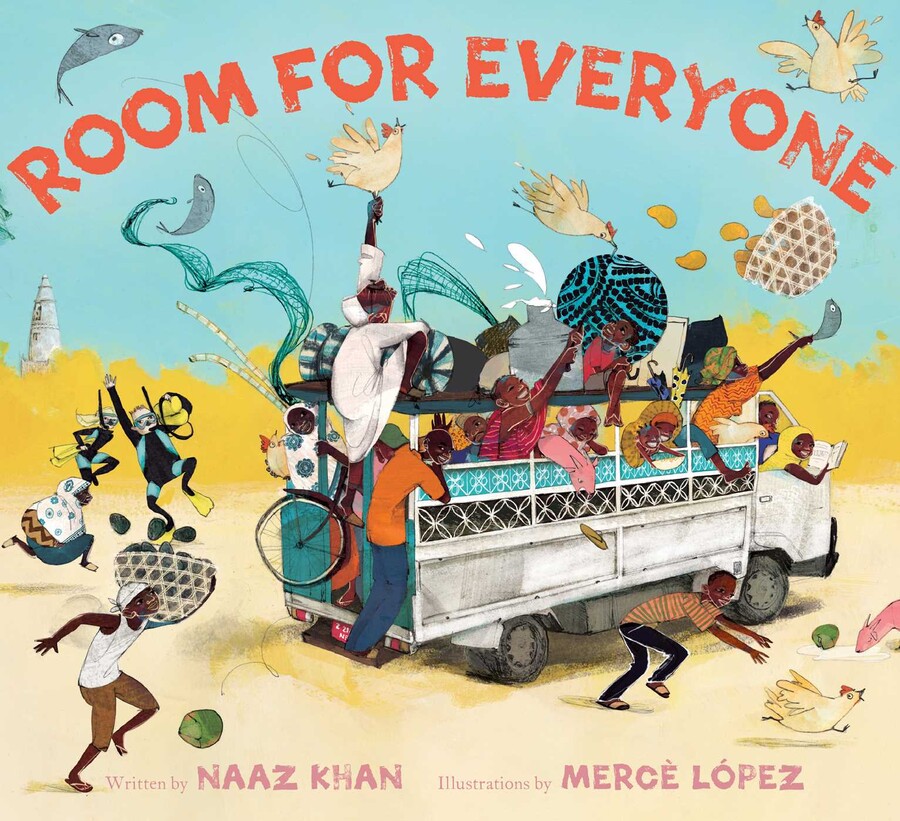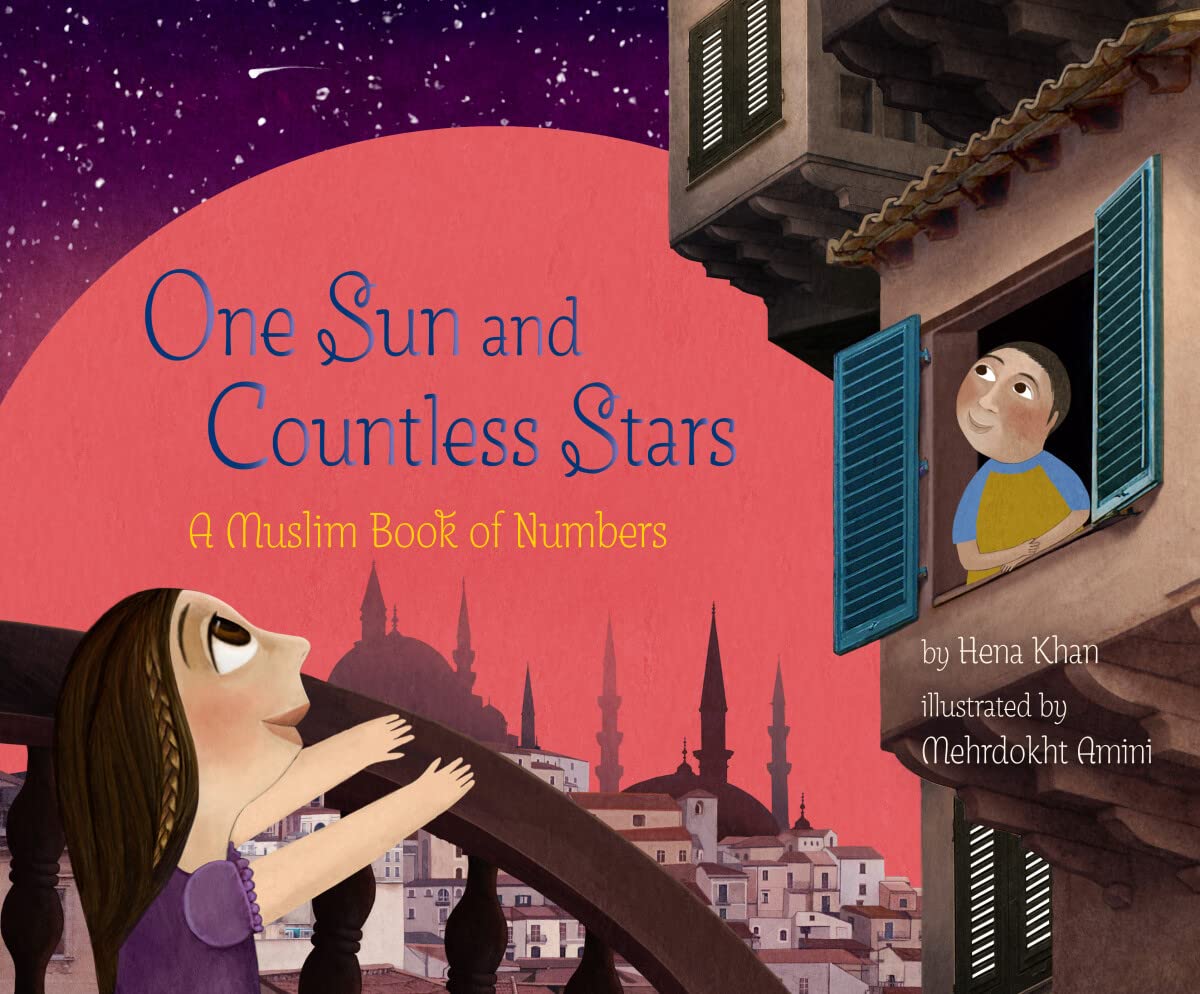We are now just shy of one month into the new year of 2023, a dazzling number that perhaps seems more at home in futuristic science-fiction stories than IRL. To help you (and myself if I’m being honest) wrap your mind around the sheer mundane magnitude of those four digits — and the two thousand and twenty-three years since the beginning of the Common Era that they represent — I’ve got a math-tastic list of stories and resources to practice and polish that most elementary and essential art of counting. 🔢
“Room For Everyone”
First up is a raucous ride through arithmetic on the daladala to Zanzibar’s Nungwi Beach in “Room for Everyone.” A young boy, Musa, and his sister, Dada, climb aboard their local daladala, a shared minibus, on their way to the beach one Friday afternoon. On their way out of town, the daladala passes by an old man with a broken bike. Because the bike is so broken, with “no bell and no light and no seat,” and because “it’s hotter than peppers out there in the sun,” the driver graciously invites the old man and his broken bike aboard. But the minibus is already quite packed with travelers and their wares, so Musa voices his concerns to Dada that there might not be enough room. Dada, on the other hand, is game to improvise, encouraging Musa to shift over just a bit to make room for everyone. As the daladala continues on its journey, the siblings and their fellow riders come across more and more travelers in need of a ride: a herder with two goats, three vendors with baskets of sticky-fresh fruit, a farmer with four pails of milk and the list goes on, growing in number all the while. With each new set of travelers in need, Musa thinks there can’t possibly be enough room on the jam-packed daladala. Yet each time the daladala gains a new set of passengers and their treasured belongings, it turns out that there actually is enough room, due in large part to the mundane magic of the daladala and the generosity and adaptability of its passengers. A wholesome rhyming story to practice counting to ten and to practice kindness, flexibility and community care! 🚌
“In the Meadow of Fantasies”
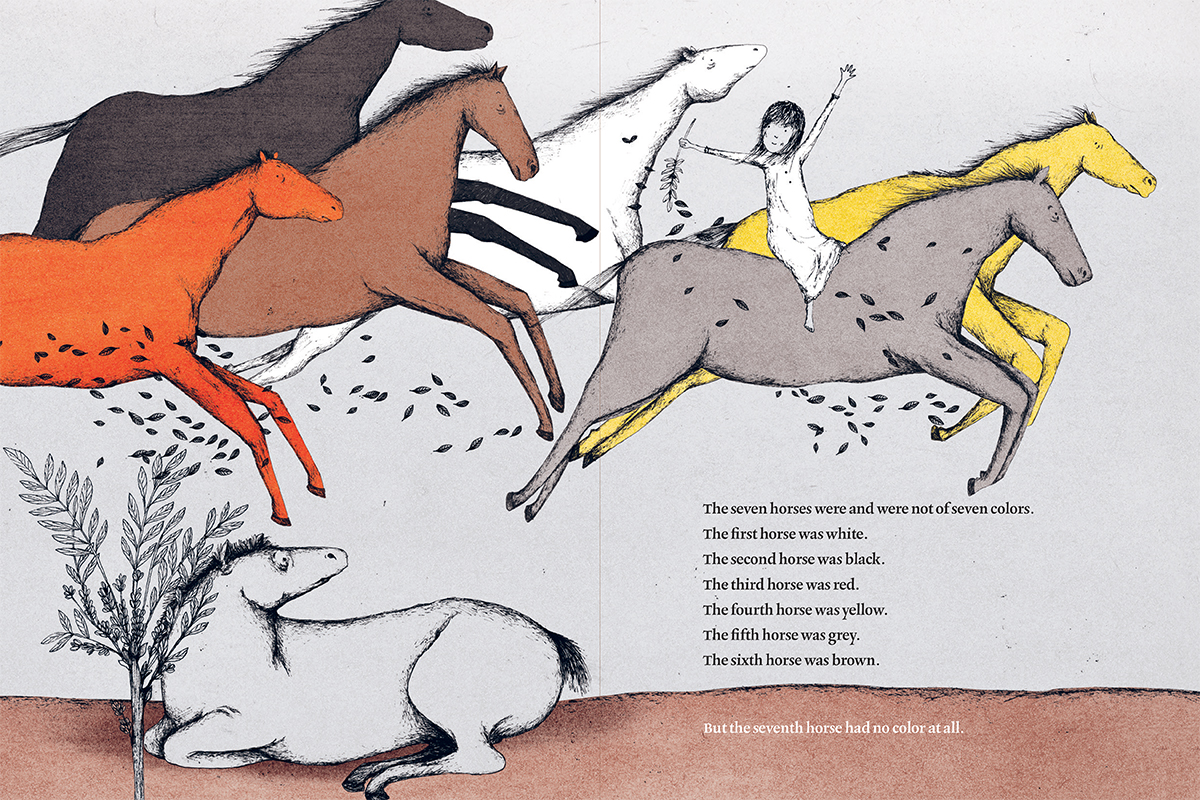
Second, we have the deeply meditative and horse-gorgeous “In the Meadow of Fantasies,” a lovely title to practice ordinal numbers (like the word “second” at the beginning of this sentence) as well as to count to seven, a number made utterly mysterious and magical by the young girl whose fantasies make up much of the story. The book starts off with a close-up of seven horses spinning on a mobile, the beginning inspiration for the young girl’s creation myth: “There was one, one horse. Then there were two, two horses. Then there were three, three horses. . .” and on to the enchanting number seven. In some ways, the seventh horse of the child’s fantasies is the most spellbinding, as it does not contain a color, a home, dreams or fantasies, at first. The other six horses soon give parts of their colors, homes, dreams and fantasies to the mystical seventh horse so that it can contain the multitudes of experiences enumerated by the child’s whimsical and tender imagination. It’s hard to describe exactly what happens in this book because the plot isn’t exactly the point; rather, this truly unique and intensely loving story is its own experience to treasure again and again. I can’t recommend it highly enough! 🐎
“One Dark Bird”
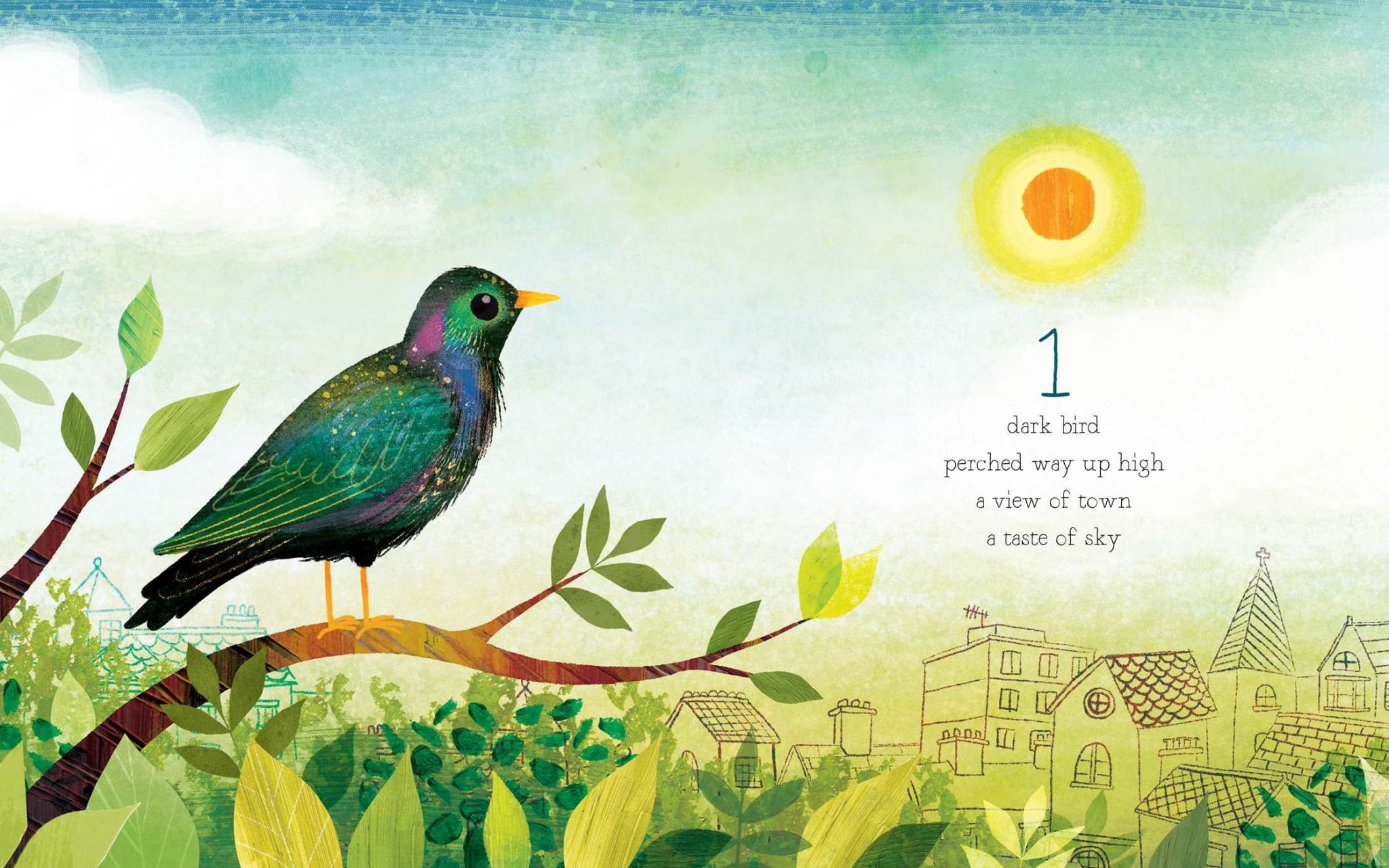
“One Dark Bird” uses the murmurations of starlings to loosely explore the mathematical concept of exponential function, namely how many single birds can come together to create a vast flock of hundreds upon thousands of birds in the sky. The story takes young readers through a slow but steady counting from one to ten dark birds before exploding into a huge flock in the hundreds and thousands, which is described as “waves like water,” “a dot-to-dot” and “a corkscrew spin.” Then, as quickly as the flock became so vast as to be uncountable, the story counts back down from ten to one dark bird “perched way up high / a view of town / a taste of sky.” Though there’s no technical explanation of how exponential function works, this story will inspire plenty of awe and wonder at the sheer largeness of near uncountable numbers. 💫
“One Sun and Countless Stars”
In “One Sun and Countless Stars” a young Muslim child counts from one to ten, enumerating the various objects and practices they encounter and observe in their daily spiritual life, from the one morning sun that begins the day with the adhan, or call to daily prayer, to the nine beads the child uses to keep track of their repeated prayers while practicing tasbih. Author Hena Khan ends the story with a helpful note about the numbers which are significant and sacred to Islam as well as an important historical reminder that “mathematics and astronomy were among the intellectual pursuits of early Muslims.” While the child of the story understands that they’ll never be able to count all of their blessings “like the [countless] stars that fill the sky,” we have early Muslims to thank for giving us some of the numbers and concepts to count in the first place! 🌞
“1•2•3 Salish Sea”
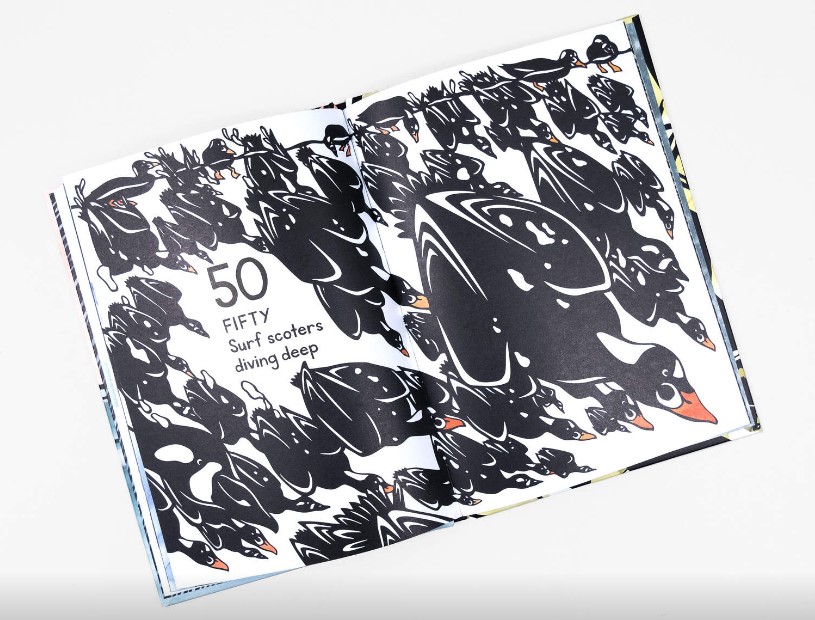
“1•2•3 Salish Sea” counts from one to ten and then on to twenty, fifty, one hundred, five hundred, one thousand, ten thousand and even one million, showcasing the various flora, fauna and weather phenomena that make up the Salish Sea, “one of the largest inland seas in the world . . . named in honor of the Coast Salish peoples, who have cared for the water and land since time immemorial.” Artist and author Nikki McClure‘s stark papercut illustrations splashed with watercolor are absolutely mesmerizing, offering an aquarium-esque window into some of the Salish Sea’s most fascinating and visually striking creatures, like the surf scoters depicted in the page detail above. Many of the region’s animals were unfamiliar to me, as someone who has never visited the Salish Sea, so it was really delightful to learn about just a fraction of the various creatures that live in the area. I especially love how McClure depicts some of the larger numbers like one thousand and one million: for one thousand, she illustrates the many wavy rings of a cedar tree’s one thousand years, and for one million, she depicts the long crashing motion of one million gray raindrops “returning to the Salish Sea.” 🌧️
To keep on counting up, down and all around, check out the rest of my recommendations in this Fun Counting Stories & Resources booklist. And for all the math lovers out there, happy almost 1/12 (or 0.08333333) of the way into 2023! 🤓

